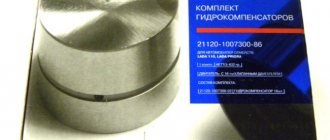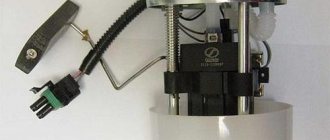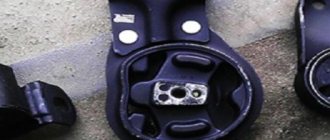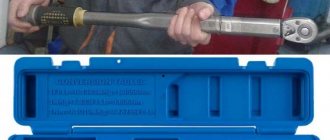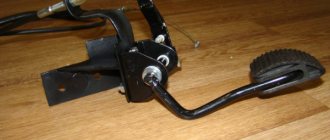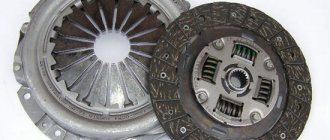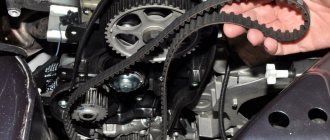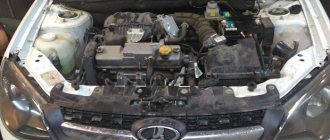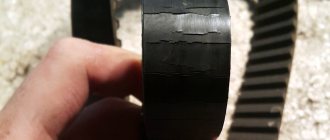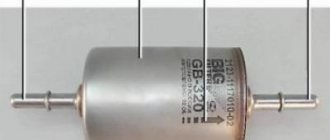Any experienced car enthusiast knows how important the gas distribution system, abbreviated as timing, is in a car. Its task is to supply air to the cylinders, where a working mixture is created to start and operate the engine. After the mixture burns out, exhaust gases are formed, which must be removed from the system, and here the timing belt also plays a decisive role.
For the correct operation of the timing belt, reliable operation of the hydraulic compensators is important. These devices are responsible for opening and closing the air intake valves. Moreover, they are responsible for opening the valves to a strictly defined amount, no more and no less.
If the hydraulic compensators break down, the gap size will be disrupted, which will lead to a phase failure of the gas distribution system. A car enthusiast can detect a problem by a characteristic knocking sound, which often causes panic even for experienced drivers. Today we’ll talk about how hydraulic compensators are replaced on a Priora with a 1.6 engine with 16 valves with or without air conditioning.
Replacing hydraulic compensators on a Priora (VAZ 2170-72) 16 valves
A hydraulic compensator is a device that is used in modern engines to automatically adjust valve clearances.
This element has an important function in the operation of the gas distribution unit, which controls the supply of the working mixture to the combustion chambers of the engine, as well as the removal of exhaust gases. In order for the engine to operate in normal mode, the above-mentioned unit must promptly open and close the valves of the power unit. It is worth recalling that in order to maintain the required valve timing, the open valve has a certain clearance. In cars of the Lada Priora family (VAZ 2170-72) with engine 21126, 16 valves are used, the clearance of which is adjusted by hydraulic compensators (HC). Since this part is subject to increased wear, in this article we will consider the issues of replacing the main valves, as well as the reasons why knocking occurs in them.
Hydraulic valve pusher INA 16V VAZ 2110-2112, Kalina, Priora, Granta (16 pieces)
Article number: 420 0073 10
- We guarantee fast processing of your order during business hours (we work from 11-00 to 20-00, Saturday and Sunday are days off).
- We guarantee reliable packaging of your order (when sending it by Russian Post or transport company).
- We guarantee the fastest possible dispatch of your paid order (within 2-4 business days after receipt of payment).
- We guarantee a refund or exchange for another product (with recalculation) within 14 days from the date of receipt of the order (the product must be in good condition, without traces of installation, delivery costs are not reimbursed).
- We guarantee a free exchange of goods (transportation costs at our expense) if the purchased goods turn out to be defective.
Payment Methods
Delivery in Russia and abroad
Pickup in Moscow
- Description
- Reviews
APPLICABILITY: VAZ 2108, 2109, 21099 (Lada-Samara), VAZ 2110, 2111, 2112, VAZ 2113, 2114, 2115 (Lada-Samara 2), VAZ 1117, 1118, 1119 (Lada-Kalina), VAZ 2170, 2171 , 2172 (Lada-Priora), VAZ 2190, 2191 (Lada-Granta), VAZ 2192, 2194 (Lada Kalina 2) with a 16-valve engine.
INA was founded in Germany in 1946 and today, together with Luk and Fag, is part of the Schaeffler Group . The company specializes in the production of bearings, as well as elements of hydraulic and mechanical valve drives and is a supplier of components to the assembly lines of the world's largest automakers. In the field of hydraulic and mechanical valve actuator components, INA is a recognized leading global manufacturer. During its work, INA registered more than 6,300 patents. When developing and manufacturing its products, INA uses the most modern materials and technologies, thanks to which INA and other products under the INA are of high quality and reliability. INA are thoroughly tested before entering the market The company's production equipment is located in more than 35 factories in industrialized countries around the world. INA employs 28,000 people worldwide, of which 7,000 work at its head office in Herzogenaurach, Central Franconia. All company products meet the requirements of TUV/ISO quality systems, which is confirmed by relevant European certificates.
Operating principle of hydraulic compensators
The main purpose of using HA in the Priora engine is to simplify the engine maintenance procedure. If previously it was necessary to adjust each valve separately, now this procedure is carried out automatically.
Structurally, the hydraulic compensator is a cylindrical part, which consists of a plunger pair located inside its body, as well as a check valve.
The operating principle of this mechanism is simple. During operation of the power unit, the camshaft cam presses the bottom of the cylinder. In this case, the hydraulic compensator moves, as a result of which the plunger presses on the valve and, accordingly, it opens.
The clearance mentioned above is regulated by the oil pressure entering the cavity under the plunger. The greater the oil pressure, the stronger it acts on the plunger and, accordingly, the valve opens with a larger gap.
Malfunctions and their causes
As mentioned above, the design of hydraulic compensators is extremely simple. But even such simple parts fail. There are three main signs that indicate that something is wrong with the hydraulic compensators:
- While the engine is running, a quick knocking noise is clearly audible.
- Engine power drops significantly, especially at high speeds.
- The engine runs rough, even at idle.
If any of these signs are observed, then it’s time to change the hydraulic compensators. The main problem with these parts is that they are extremely sensitive to the quality of the engine oil. Sometimes it doesn’t even get to the point of replacing hydraulic compensators. The car owner simply drains the old oil, fills in new oil (after flushing the engine) and the knocking disappears. If the problem does not go away, it means that there is mechanical wear of the hydraulic compensators (usually this occurs due to the so-called metal fatigue).
Why are hydraulic compensators knocking?
The 21126 engine is a reliable design with a long service life, but even with such characteristics, difficulties may arise in the operation of the gas distribution mechanism. Over time, when driving a Priora, a characteristic knocking sound of the hydraulic compensators occurs when cold or hot. In this case, there is a drop in the power of the power unit and an increase in the noise level of the latter.
It is worth noting that the service life of this part for VAZ 2170-72 Priora cars is about 100 thousand kilometers. It may vary and depends on the quality of the oil used.
The main reason why knocking occurs is the characteristics and quality of the engine oil. The design of hydraulic compensators implies increased sensitivity to the characteristics of the lubricant and, accordingly, deviations from the manufacturer’s recommendations directly affect the service life of the hydraulic fluid.
Video on the topic:
Quite often the knocking problem is solved by changing the engine oil. In this case, it is necessary to flush the engine with a special liquid.
Almost always, after an oil change, a characteristic noise from the compensators follows, because the new oil has not had time to rise to the plunger pair of the hydraulic valve. This is observed for about the first five minutes of engine operation, after which the knocking stops.
If after changing the oil the situation has not changed and the knocking continues, then there is the option of flushing the power unit, which is done in two ways:
- Use of special flushing fluid. It is poured into the engine and temporarily used in it. However, its effect is questionable, since there are often fakes on the market, and they do not help.
- Dismantling and manual washing of each hydraulic compensator.
There was a knocking noise from hydraulic compensators: the main reasons
As you know, a hydraulic valve is a device that allows you to automatically adjust the thermal clearance of valves. This solution simplifies engine operation, since valve adjustment on engines with hydraulic compensators is not necessary. In parallel with this, the presence of a hydraulic valve allows us to speak about an increased timing life, since the thermal clearance of the valves, provided that the hydraulic valves are in good working order, is constantly maintained in optimal condition, taking into account a cold or warm engine.
As for knocking noises, there are three main reasons for their occurrence:
- mechanical wear or defect of hydraulic compensators;
- problems with the engine lubrication system;
- unsuitable or lost motor oil;
Now let's look at all these incidents in more detail. Let's start with the hydraulic compensators themselves. This device is a plunger pair that interacts with the working fluid (motor oil). During operation, various defects appear on the surface of the GC, wear appears, etc. Also, contamination of the hydraulic compensators can cause the valve for supplying oil to the hydraulic fluid to become stuck, that is, the valve simply does not work. One should also not exclude the possibility of jamming of the main body, its complete breakdown, or the entry of air as a result of a lack of oil in the oil system.
Heavy contamination of the lubrication system often leads to knocking noises, after which dirt and deposits get into the hydraulic compensators. In this case, the cause may also be a clogged oil filter, in which the bypass valve is open and the oil is not filtered. Let's also answer the question whether hydraulic compensators can knock due to oil. A common reason why hydraulic fluid starts to knock is the working fluid itself. If the engine oil is not selected for the season, is not suitable in viscosity and does not correspond to a specific type of engine, has lost its properties or is initially of poor quality, then the hydraulic compensators can knock both on a cold and warm internal combustion engine.
What also deserves special attention is when the engine is overheated, antifreeze or antifreeze gets into the oil, there is an excess of crankcase gases in the lubrication system, fuel gets into the lubricant, etc. In other words, there are internal combustion engine malfunctions, but for some reason the oil has not been changed after they were eliminated. As a result, a loss of lubricant properties occurs, the viscosity changes, and the hydraulic fluid begins to knock.
Replacing hydraulic compensators on the 21126 Priora engine 16 valves
First of all, you need to buy new hydraulic compensators for the Priora engine. It is important to take into account that if one main valve fails, then everything should be changed. To carry out the work you will need the following tools.
Tool
- Set of wrenches with socket heads;
- Screwdrivers;
- New set of compensators;
- New cylinder head cover gasket;
- Camshaft seals;
- Sealant;
- Magnet (optional).
Procedure
If after all the actions the knock remains, then the reason probably lies not in the hydraulic compensators themselves, but in the cylinder head. In your Priora, the oil channels may be clogged, as a result of which the expansion joints do not receive the required amount of oil.
We also add that the average cost of work at a service station to replace hydraulic compensators on a Priora is about 4,000 rubles.
Source
AVTOVAZ diagnostic technique
Methodology for diagnosing and eliminating the defect “Knocking of hydraulic pushers”
Causes of knocking of hydraulic pushers
The main reason for timing knock is the valve seating at an unacceptably high speed, which occurs as a result of a violation of the kinematic connection between the valve and the camshaft cam. The main reasons for the disruption of the kinematic connection in the 16-valve engines of JSC AVTOVAZ are disturbances in the operation of the hydraulic pusher (hereinafter referred to as GT). Possible causes of such violations are given in order of likelihood of occurrence:
1. Gas content in oil is more than the maximum permissible 7%
a) Emptying of the lubrication system channels during long-term parking of the car due to oil leakage through the gaps in the plain bearings, leakage of the anti-drain valve in the cylinder head, leakage of the oil filter anti-drain valve. Before deciding to search for the causes, it is advisable to try to eliminate the knocking according to the “Recommendations for removing air from hydraulic pushers” given below.
b) Air leakage into the suction line of a leaking lubrication system through:
- oil receiver sealing ring;
- leaky welding seam of the oil receiver;
- leaking oil pump cover casting,
- leaky coupling of the oil pump housing with the cylinder block (for example, discrepancy between the design specification and the non-flatness of the oil pump housing).
c) Oil level does not meet the requirements of the engine design documentation:
- if the level is excessive due to mechanical foaming of the oil by the crankshaft counterweights,
- if the level is insufficient due to an unsettled top layer of oil entering the oil receiver.
d) The presence of water in the oil is above the maximum permissible norm (water turns into a gaseous state when heated).
e) Oil does not meet foaming requirements.
Why are hydraulic compensators needed on the VAZ 2170 Priora
A design element of a modern engine is designed to automatically adjust the valve position. The part allows you to eliminate the manual calibration procedure every 10,000 km, which makes car maintenance easier and helps increase the power of the power plant.
The design and principle of operation of hydraulic compensators on the Lada Priora
Structurally, the hydraulic compensator on Priora looks like a metal cylinder with a spring and a shut-off valve. Inside the part there are two smaller sleeves. The operating principle of the system is based on oil pressure in the plunger. When the pusher cam leaves, the cavity inside the hydraulic valve is filled with oil. At the end of the cycle, the container is completely filled and the cam begins to push the entire structure down (open the valve). In this case, the main valve pusher rests on the part and lowers it. The opening depth is adjusted by changing the pressure of the liquid entering under the plunger mechanism.
What to do when hydraulic compensators knock when hot
The only way to get rid of the knocking is to find out and eliminate its cause. What happens next will depend on the current situation.
First of all, you need to check the oil level in the crankcase . How it will circulate through the oil channels will depend on it. It is also worth making sure that the oil pressure is sufficient , even if the oil lamp light does not light up.
Incorrect engine oil level and pressure will affect not only the operation of the hydraulic compensators, but also the operation of the engine as a whole!
Each engine has its own operating oil pressure and depends on its design (you need to check the documentation), however, it is believed that at idle speed the pressure should be about 1.6...2.0 bar. At high speeds - up to 5...7 bar. If there is no such pressure, you need to check the oil pump. Most likely due to oil dilution, its performance decreases. Often, in order to ensure pressure, the cause itself is not eliminated; when the hydraulic valves knock when hot, car enthusiasts fill in thicker oil when changing. But you should not overdo it, since oil that is too thick is difficult to pump through the system. What can cause oil starvation?
Moreover, there is no need to rush to judgment on the pump itself. Oil pump malfunctions can be caused by various reasons - wear of parts, malfunction of the pressure reducing valve, wear of the working surfaces of parts, and its operation can also deteriorate if the oil receiver screen is simply clogged. You can see if there is dirt on the mesh by removing the pan. But there is no need to rush with such work. It can become dirty only if the general condition of the oil is poor or the oil system has been cleaned unsuccessfully.
Check the condition of the oil . Even if you change it according to the regulations, it could become unusable ahead of schedule (under difficult operating conditions of the machine, or you came across a fake). When plaque and slag are detected, it is often unclear what to do if the hydraulic compensators knock when hot. It is advisable to flush the oil system, because, most likely, the oil channels could be clogged. To check the condition of the oil, just do a small drop test.
Most often, the problem can be solved simply - just change the oil and oil filter. Or it’s simply time to change the hydraulic compensators.
How to check hydraulic compensators
You can check hydraulic compensators using one of three methods:
- Using a car stethoscope . However, this method is only suitable for experienced car enthusiasts who know how to “listen” to the engine. By applying it to different areas where hydraulic compensators are located, you can compare the sounds emanating from there.
- Using control probes . To do this, you need special control probes with a thickness of 0.1 to 0.5 mm. Accordingly, on a hot engine, you need to check the distance between the hydraulic compensator and the cam using feeler gauges. If the corresponding distance is more than 0.5 mm or less than 0.1 mm, then the hydraulic valve being tested is unsuitable and must be replaced.
- Indentation method . This is the simplest and most common verification method. However, to perform this, the hydraulic compensators must be removed from the engine. After this, you need to use a wooden block or a screwdriver to try to press the central rod of the compensator inward. If the compensator is working properly and is in more or less normal condition, it is unlikely that you will be able to simply press it with your finger. Conversely, the rod of a faulty compensator will easily fall inward.
The last method of checking can also be performed without removing the hydraulics from the engine, however, this will not be as convenient and the result will not be as obvious. Usually, failed hydraulic compensators are replaced with new ones, but in rare cases you can try to restore it by washing. Another option is to clean and repair the hydraulic compensator. As practice shows, repairing and cleaning the hydraulic valve rarely helps, but it’s still worth trying to restore it. When you decide to change, it is better to replace the entire set, otherwise the situation will repeat itself soon, but with different hydraulics.
If you drive with knocking hydraulic compensators for six months or longer, then when you remove the valve covers, there is a high probability that on the very “bed” of the camshaft, below, there will be burrs from the rockers (rocker arms). Therefore, decide for yourself whether it is possible to drive with the knocking of hydraulic compensators.
Why are hydraulic compensators knocking on a Priora with 16 valves?
A knocking sound during operation of parts appears when the supply of emulsion to the plunger is reduced and the pusher does not move evenly. The causes of the characteristic sound can be the following factors:
- Wear or low quality lubricant. The correct operation of the mechanism depends on engine oil. The technical clearances in the plunger are minimal, which requires the use of a high-quality consumable.
- Clogged fluid lines.
- Natural aging of parts. Main engines are designed for 100,000 km. Moreover, if the machine is operated in difficult conditions, the service life is reduced by 15-20%.
Which hydraulic valve compensators are better to buy?
To buy the necessary compensator in the store you need.
1. When purchasing, provide the seller with the VIN code of the car. This will give him the opportunity to select the desired product in the catalog.
2. Know the characteristics of the hydraulic compensator: height, outer diameter, as well as the type of product being installed.
3. Pay attention to the type of product and packaging materials. The part must be well processed, free of burrs, the box must be equipped with information about the release date and manufacturer.
4. When choosing, you should give preference to products from well-known companies on the market. A cheap product is attractive due to its price, but its quality will make you regret your purchase.
In order not to run into a fake, the hydraulic compensator should be purchased in large stores that value their reputation.
Why do hydraulic compensators knock on a Priora when it’s cold?
The reasons for knocking parts on a cold engine can be several factors:
- The viscosity of the lubricant is incorrectly selected. Thick oil does not pass through small channels, which causes dry friction.
- Worn or contaminated lubricant. The presence of solid impurities, soot or soot makes it difficult for the mixture to flow freely.
- Low pressure inside the lines, pump malfunction.
- Jamming of the plunger mechanism due to sludge formation or misalignment of surfaces.
- Wear of the main body. Fatigue of the spring, shell on the check valve ball.
When do you need to change hydraulic compensators on a Priora?
Replacing hydraulic compensators on Priora is carried out in cases where other methods of repair or restoration are not relevant. Standard diagnostics will help identify such problems.
Diagnostics
It is first necessary to remove all hydraulic compensators from the engine, disassemble and clean them for detailed study. When troubleshooting, in 80% of cases motorists encounter the following problems:
- Worn or damaged integrity of the shut-off valve ball requires a complete replacement of the valve body.
- The presence of solid deposits on the surface of the part. To fix the problem, just wash all the components.
- Wear of the plunger pair is fraught with replacement of the block.
- The presence of scratches, chips, cracks on one or more surfaces of the mechanism also requires the installation of a new part.
How to identify a faulty hydraulic compensator on a Lada Priora
You can determine which hydraulics are faulty in a simple way. It is enough to press the covers with a screwdriver through a rag. If one element is pressed too easily or does not return to its original position, the unit must be repaired or replaced. This action can be repeated with 2 or more nodes. In this case, it is recommended to perform a comprehensive replacement.
The knocking noise of the engine does not go away or appears after warming up
Much more dangerous is the knocking of hydraulic compensators, which appears as it warms up or only intensifies as the power unit reaches operating temperatures. In this case, the hydraulic compensators constantly knock at idle speed of a warm engine; the knock may be present under load, etc. The list of causes for this malfunction is wider than knocking noises on a cold internal combustion engine.
First, you need to make sure that it is the hydraulic compensators that are knocking when hot, since there are many reasons for knocking in the engine. To do this, you need to know how to identify a knocking hydraulic compensator. It is also important to be able to determine which hydraulic compensator is knocking, which will help more accurately localize the fault.
Note that the knocking of compensators has a characteristic sound. The pitch is high, the knock is loud, reminiscent of a metal ball striking another metal part, and is localized under the valve cover. Can be easily heard with a stethoscope. If the main valve knocks constantly, then it may soon become completely jammed or other breakdowns will occur. In such a situation, the engine needs repair; it is possible to replace the hydraulic compensators. In some cases, the seat of the hydraulic compensator is also broken. After the motor heats up, thermal expansion of the parts occurs, and the hydraulic fluid begins to “dangle” at the installation site and knock. A more accurate determination of a knocking main engine is possible after partially disassembling the motor and removing the cover.
As already mentioned, on a cold engine, contamination of the channels can cause knocking, after which the extraneous sound disappears as it warms up. In the case of a hot internal combustion engine, exactly the opposite happens, when, parallel to the increase in temperature, the deposits in the channel soften and shift, completely blocking the supply of lubricant to the main fluid chamber. In this case, it is also recommended to flush the hydraulic compensators and lubrication system, change the engine oil, or clean the engine after disassembling it.
The oil filter should be checked, which may be the cause of insufficient pressure in the lubrication system and, as a result, knocking of the engine when hot. If there is insufficient pressure in the hydraulic compensators, an air lock is created. The oil level in the engine also deserves special attention, which should not be lower or higher than normal (oil overflow into the engine). It should be noted that when cold, at low speeds and problems with the oil level, the HA may not knock. After the engine warms up, the amount of air in the oil increases and a knocking sound from the hydraulic compensators appears, as the oil and air become a compressible mixture. It is also advisable to check the operation of the oil pump and measure the pressure in the lubrication system if problems with the hydraulic fluid appear on a hot engine.
How to replace hydraulic compensators on a Priora 16 valves with your own hands
Technically, replacing hydraulic compensators on the Lada Priora can be done independently. The VAZ engine does not have a complex design and the operation can be performed even by an amateur. However, this will require preparation. At the same time, for the Lada Priora hatchback and sedan the procedure is identical.
Necessary equipment
When performing work, the motorist will need the following set of tools:
- two screwdrivers (+;-);
- set of spanners;
- special sealant;
- magnet.
Sequence of actions when replacing hydraulic compensators VAZ 2170 Priora 16 valves
- Set the car to the parking brake.
- Turn off the power supply.
- Remove the power unit casing.
- Disconnect the ignition and injector power wires.
- Remove the crankcase ventilation pipes from the cylinder head.
- Remove the oil dipstick mount along with the element itself.
- Remove the exhaust manifold.
- Remove the casings and timing belt.
- Carefully remove the camshaft gears and the rear cover of the mechanism.
- Remove the cylinder head cover by first unscrewing 15 bolts.
- Unscrew the bearing housings.
- Having previously marked the position, remove the camshafts.
- Dismantle the hydraulic compensators and install new parts in their place, after lubricating them with oil. This can be done conveniently using a magnet.
Important! The manufacturer recommends replacing hydraulic compensators as a complete set. This is justified by the high probability of sequential failure of several components, which will provoke repeated repairs.
Moreover, after replacing parts, knocking can be observed during the first 2-3 starts of the power plant. If the noise does not stop, the problem is hidden in the lubricant supply. In this case, it is necessary to flush the crankcase compartment of the engine or decarbonize the pressure lines. You can see how the Lada Priora engine works after replacing the hydraulic compensators in the video:
Prevention
In order to protect the hydraulic lifters on the Priora 16 valve, you must follow the following recommendations:
- Use only high quality lubricants. Good oil can extend the life of the engine by 2-3 times.
- Perform vehicle maintenance in a timely manner, change fluids, and prevent worn-out lubricants. If the service interval for replacing lubricants is not observed, sediment may form and intensive sludge formation inside the internal combustion engine.
- Do not allow the motor to overheat. When the critical temperature is exceeded, the cylinder head may become deformed, which causes a displacement of the cylinder head axes and leads to their jamming.
- The service life of hydraulic valves on the VAZ 2170 in the sixteen-valve version is limited to 100,000 km.
It is recommended to carry out a preventive replacement already at 90,000 kilometers covered by the speedometer.
How to eliminate the knocking of hydraulic pushers on Lada Priora
Timely and high-quality maintenance of the engine oil system is the key to flawless operation of the hydraulic compensator mechanism. After all, the unit is designed for use throughout the entire resource of the power plant.
Use of recommended lubricant
When the hydraulic pushers just start knocking, the manufacturer recommends changing the lubricant to a proven option. Therefore, when the question arises of what kind of oil to pour in principle, it is worth analyzing reviews to determine the acceptability of a certain model of oil product for hydraulic compensators.
Of course, the best choice for Lada Priora will be the composition recommended by the manufacturer, specified in the instruction manual. However, not all current popular products are included in the list.
An analysis of opinions shows that, indeed, with the universal viscosity of 10W-40 or 5W-40 specified by the factory, not every oil is suitable. For example, Shell Helix Ultra 5W-40 causes knocking already at 15,000 km, while on Liqui Moly Optimal Synth 5W-40 the hydraulics are silent even at 80,000 km.
Reviews show that it is optimal to choose the following lubricants:
- Total Quartz 9000 Energy 5W-40.
- Mobil Ultra 10W-40.
- Wagner Windigo 10W-40.
Flushing
Many owners, in advanced cases, resort to general engine flushing. However, the effectiveness of such an event in the fight against knocking GCs is low. This is explained by poor oil pumpability in the area of the hydraulic pusher chambers.
If changing the lubricant does not help, the best solution is to remove the cylinder head cover and find which hydraulic compensators on the Lada Priora 16-valve engine are knocking and determine the reason for this. Defective parts are identified by diagnosing running resistance with a wooden wedge. A fast movement speed in comparison with other hydraulic supports indicates wear of the hydraulic module, the presence of a constant gap indicates its coking.
Attention! The wooden wedge must be pressed against the non-working surface of the cams.
Effective removal of carbon deposits inside the cylinders is their local washing. Worn assembly modules cannot be repaired.
Additives
Additive compounds help delay identifying the causes and cleaning the timing belt. There are several products available in the market. The most popular products are from Liqui Moly and XADO. The effectiveness of substances depends on the specific case. Fans of motor additives often equate this class of chemistry with a waste of money.
Life hack: hydraulic compensators for a Priora car with 16 valves, device, price
Compensators are needed for automatic valve adjustment; if they were not there, it would be necessary to adjust the valves every 10 thousand, as on 2109. On the Prior, hydraulic compensators knock under different circumstances - and this is not always a malfunction.
They have a special knock, so experienced car enthusiasts will recognize it almost immediately. A knock that comes from the engine of a Priora car is not a very good sign that should alert you. Each car needs to be approached differently. Therefore, when hydraulic compensators on a Priora knock, make proper preparations for repairs - you need to find out what is the reason for what is happening and how you can eliminate it by correcting the situation. In this article, we have collected for you the main signs: why these parts make noise, whether the car is cold or hot.
Important: Even if the new hydraulic lifters are knocking, this is not a reason to prepare for the worst outcome - it sounds strange, but it is true. This is a VAZ, gentlemen, and everything can happen on it.
These parts have 16 valves on the Priora. (if taken as a complete set) they are not so little. The price starts from 4000 rubles and above. Replacing hydraulic compensators is labor-intensive and I don’t recommend getting into the engine yourself without experience. At a service station, such work for a Priora car will cost from 5,000 rubles and more.
The picture shows the valve seat - and in the middle there is a compensator
Sequence of actions on Lada Priora
- Both terminals are removed from the battery.
- The wires on the injectors and on the ignition coil are disconnected, the cable is removed from the throttle, the air filter and all other wires that prevent access to the engine intake manifold are removed.
- Before removing the manifold, you will have to remove the belt from the generator, then unscrew its mounting bolt. After this, the generator can be moved to the side and you can get to one of the intake manifold mounting bolts (there is no other way to get to this bolt).
- The next step is to remove the ramp and fuel injectors (if the car has air conditioning, you will also have to remove its hoses so that they do not interfere).
- All other manifold mounting bolts are unscrewed, after which it is removed.
The valve cover is unscrewed with a 12 mm socket wrench.
- Now you can remove the valve cover, timing pulleys and camshafts.
Removing a previously unscrewed valve cover
- Since we now have access to the hydraulic compensators, all that remains is to replace them with new ones (we should also change the seals on the camshafts and the sealant on the valve cover).
After removing the cover, the camshafts are removed
Worn hydraulic compensators are removed from their sockets
- After this, the above components are reassembled. The instructions below are suitable for cars with 16 valves.
Replacing hydraulic compensators on a VAZ-2112 is not so easy, but you can do it yourself. Of course, this will require time and effort. The choice of product should also be taken quite seriously, because the resource of use depends on the quality.
Hydraulic compensator operating principle and design
The hydraulic compensator is a small cylinder, inside of which there is a spring and a pair of even smaller cylinders - plungers, as well as a check valve. The operating principle of the engine is such that it achieves maximum efficiency when the chamber contains a “clean” mixture - exclusively fuel and air.
When gases remain there after one cycle, the mixture becomes increasingly less pure and the engine produces less power. In order for gases to leave the chamber in time, the operation of the valves must be harmonious. There are hydraulics for this - they constantly adjust the position of the valves. And oil enhances their work and helps fight friction.
The oil enters a small gap under the plunger, presses on it, and after that the pusher exerts force on the valve. When at rest (during the so-called “break” when the cam moves), the pusher is constantly in contact with the camshaft cam, which is ready at any moment to move it down so that the valves open even more.
On Priora, the knocking sound of hydraulic compensators appears when the trajectory of their movement changes. That is, when they have to change the position of the valve, they move “crookedly”, and their efficiency approaches zero. There can be several reasons for problems with hydraulics and valves. Diagnostics may lead to the discovery of other faults.
Communities › Lada Priora Club › Blog › Selecting hydraulic compensators
Hello everyone! It is planned to replace all the hydraulic lifters (16 pieces), but after reading the forums I still couldn’t decide on the manufacturer (apparently motorists don’t sit on the forums). There is no information on ratings among manufacturers. For now I stopped at the Lada-Image (Perm) or Ina (100% original) plant. But which will be the highest quality and most durable? There are also many other manufacturers, such as: RUVILLE, Keno, Trial, Herzog, TSN, MANOVER, QML, BAUTLER, LGR, etc. Help me make a choice!
Tags: 21120-1007300-86
Comments 39
I always took INA, never had any questions
I took NPA through Autodok, the second year, everything is fine, the oil is Rosneft.
Why npa?
Based on the principle of value for money.
INA, but the original is unlikely to be found cheaper than 3500, and only if someone doesn’t want to make money. It’s funny to read that INA has a lot of defects... Of course, a lot, if you charge 1500-2500 per set.
if you have a varik, take the original one, take them, they go for 400 thousand
Is this from personal experience or did the mechanics share information?
was a prior. drove 500 thousand. Sold it, keeps driving. I made capital for 200 thousand. The valve burned out. (Inna installed hydraulic pushers, and STK forged pistons with grooves) the engine was sharpened for the first repair. my head went completely over. The only old ones left were the distributors and the elbow. By 500 thousand I didn’t burn oil, I never heard a clatter from the engine, regardless of the starting temperature from -30 to warm! Mobil oil 3000 5 w40 always gasoline exclusively 95 or 100. in the interval from 200 to 500 thousand I changed only the oil and the pump rollers belt twice. I didn't use any additives. but the master who made the motor is an arch-pedantic person!
Is this from personal experience or did the mechanics share information?
but the shitty iron is still from Priora
Let me ask cautiously, what caused the desire to change them? I changed the brand of oil and the problem went away. Mileage 163,000 km. Hydraulics from the factory
The desire is mechanical wear of several hydraulic compensators (perhaps they were already installed from the factory with a proper fit). In this case, the brand and viscosity of the oil is irrelevant.
Replacing hydraulic compensators on a Priora (16 valves)
For work, prepare the following tools:
- flat-head, Phillips-head screwdriver;
- socket wrenches;
- You may need a cylinder head gasket; replacing it will allow you to be safe from the fact that the spark plugs may flood the spark plugs with oil;
- sealant;
- magnet - for convenience.
Replace expansion joints on a Priora car according to the instructions:
- Stop the car with the handbrake. Lift the hood.
- Loosen the clamp securing the crankcase ventilation hose (main circuit).
- Disconnect the hose from the cylinder head fitting. Cover the fitting with rags to prevent any objects from getting inside.
- Remove the bracket for the wires of the injectors and ignition coils, having first unscrewed the bolts with the “10” head.
- Disconnect the throttle assembly wiring harness from the cylinder head, having first removed the fastenings with the same head.
- Let's move on to the cylinder block cover. All fifteen screws will have to be unscrewed. To do this, use the E-8 head. Please note that it is additionally secured with sealant.
- Therefore, use a plastic screwdriver to carefully pry the cover in places where there are visible gaps, and then lift it. At this point, evaluate the camshaft lobe wear. It should not be covered with chips or other signs of mechanical damage.
- Now you can check the faulty hydraulic compensators. Avoid damaging the valves of the gas distribution mechanism; handle them carefully.
- Remove the faulty hydraulics with a magnet and put new ones in their place, securing them in a level position.
- Along the way, you should inspect all parts, assessing the degree of wear. This will help to find the reasons for the wear of the hydraulics or the consequence - something that has worn out faster due to their improper operation.
- Replace sequentially. Do not forget to coat the cylinder head cover with sealant to ensure maximum adherence to the body.
- Reassemble the components in reverse order, check the operation of the new hydraulic tappets by starting the engine.
How to identify a faulty hydraulic compensator
Before work, analyze the wear of all pushers, otherwise the case where someone changed the working compensators will repeat. The search for knocking hydraulic compensators of Priora 16 valves involves conducting several experiments or tests. It is basically calculated that Priora hydraulic pushers operate for 100 thousand kilometers.
These parts may rattle when starting a cold engine, and then continue to make noise even when the engine warms up. Knowing about this malfunction, follow these steps to identify faulty Priora hydraulic pushers:
- Check the main valve ball valve. If it is worn out, then nothing can be done - the hydraulic valve will have to be changed and a new part installed in its place.
- The internal cavity of the pusher is contaminated with used grease or oil. If the cases are not critical, you can wash the hydraulics and then coat everything inside with a good oil composition.
- A couple of plungers are worn out - these are two small cylinders. The part cannot be repaired, so it will also have to be replaced.
These signs appear when the hydraulic valves knock while the engine is cold, as well as after it has warmed up, but they quiet down at high speeds. There is another way that will help identify faulty hydraulic pushers. It touches the spring - it is responsible for ensuring that the small parts return to their place whenever the valve needs to be returned back, closing the hole.
In order to see how the HA springs work, press each small part through a soft cloth. At the same time, try to place your finger so that it completely covers its upper part. A well-functioning hydraulic compensator should return when pressed. If it remains at the bottom, this means that the spring no longer works, and it’s time to change the part.
By the way, let’s talk about why Priora hydraulics can knock after repair work:
- If new parts make a sound, they are still falling into place - after a couple of engine starts this sound will not be there.
- If the knocking noise appears after changing the oil, the reason is poor-quality oil or a bad/worn out filter.
- Finally, after the car has been left alone for a long time, this piercing sound may also appear. Over time it will disappear. It's just that the oil has drained from the working chambers, and they need to be filled before starting everyday operation without knocking, as well as other signs of malfunctions that can be scary.
Knocks when the engine is cold, what to do
Please note that by starting a cold engine, you are subjecting it to a significant test. This does not mean at all that you cannot run it in frosty weather. It’s just that all the insides harden, the movements of parts are constrained, even “wooden”. They need to warm up in order to return to normal - then the gaps and other parameters will return to operating parameters.
Realizing the severity of the work that the engine does in the cold, we can talk in detail about the reasons why the hydraulic pushers of a cold sixteen-valve Priora engine knock:
- The engine oil life is coming to an end. The oil is of poor quality. The oil is contaminated with engine operating products.
- The viscosity of the engine oil is not suitable for the engine. If it is too soft, the hydraulics will literally “break out” of their positions, which will damage their springs.
- If the oil is too thick, the hydraulic boosters will physically be unable to push the valve.
- The oil system is clogged. If the cross-section through which the valve passes is reduced, the pressure inside the hydraulic tappet decreases and it produces less power during operation.
- The main oil line does not support high pressure. This can be recognized by the burning light indicating the oil level on the dashboard.
- The plunger inside the main valve is jammed. This can happen due to carbon deposits accumulated inside.
- The plunger is worn out. If the check valve leaks, there can be no talk of any high pressure that the hydraulic fluid exerts on the valve.
The knock does not go away or appears on a hot engine
When the engine temperature has gradually risen to operating temperature, the knocking noise may remain. On the contrary, it can suddenly appear. The cause could be any problem typical of knocking on a cold Priora engine. But due to the specifics, two more reasons can be named that cause the knocking of hydraulic pushers in warm Priora engines:
- High or low oil level. When there is too much oil, it doesn't provide room to work. If it is too small, there will not be enough pressure to push the valve.
- The hydraulic wells have expanded due to an overheated engine. Small parts will “walk” in them, and then even go down with a figure eight. Because of this, all the force that they could exert on the valve will be extinguished. Cool down the engine.
Source
What's the result?
Taking into account the above information, we can conclude that there are many reasons for knocking hydraulic compensators. In some cases, it even happens that new hydraulic compensators are knocking. This happens when, in parallel, the engine oil was incorrectly selected, the oil filter is clogged, there are problems with the cleanliness of the lubrication system or the oil pump, or there are hidden or obvious engine problems that have not been eliminated.
Additionally, it is not recommended to immediately disassemble the internal combustion engine yourself for diagnostics, replacement or washing of hydraulic mounts without proper experience. The fact is that the cause of the knocking must be accurately established. There are quite common cases when, after washing and cleaning the hydraulic compensators, as well as the channels of the lubrication system, the knocking still remains. In such a situation, only professional engine diagnostics can help avoid possible consequences and unplanned financial costs.
Hydraulic compensators: what they are, what function they perform, hydraulic compensator malfunctions and symptoms. Do-it-yourself repair and washing of hydraulic compensators.
Valves knock on a cold engine or after warming up the engine: possible causes of valve mechanism knocking. Fault diagnosis, useful tips.
The most common causes of engine knocking are: piston knock, connecting rod knock, crankshaft knock. What to do if the engine suddenly starts knocking while driving.
Why a cold engine may knock: various malfunctions. Analysis of the nature of the knock in the power unit: ringing, metallic, muffled, etc.
What can knock, whistle, rustle and make other extraneous sounds under the hood after starting the engine. Diagnostics and determination of faults.
The appearance of knocking noises in different diesel operating modes. Fault diagnosis. The nature of the knocks of the crank mechanism, timing gear, and fuel equipment.
